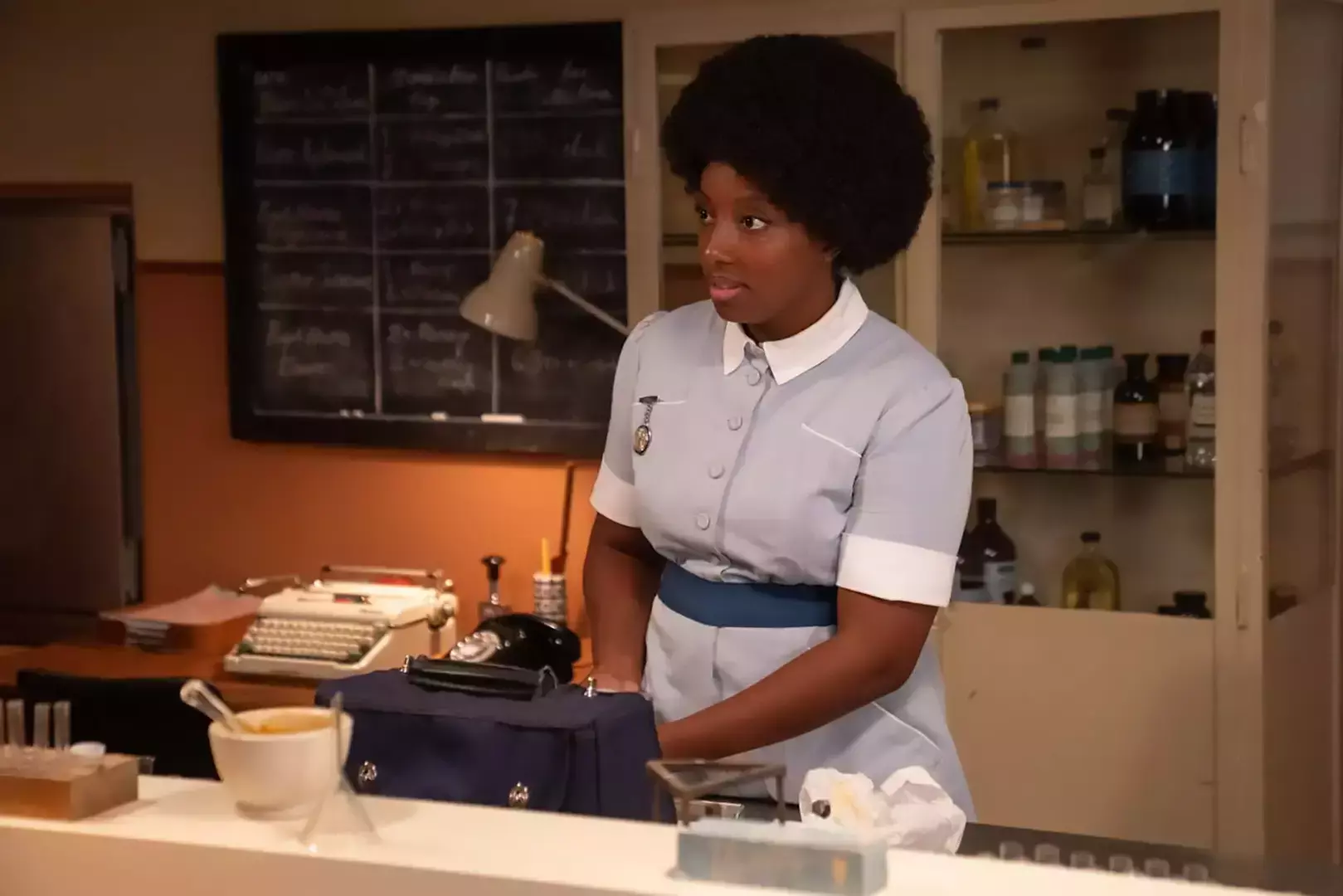As a midwife, I am an expert in the care of low-risk, healthy birthing people. But what happens when someone who has started in midwifery care begins to creep out of the “low-risk” realm and into a moderate or high-risk category? The answer is very nuanced; it can depend on your state, the practice or healthcare system that you work for, or your own comfort level. The midwives of Nonnatus House always have available consultations with Dr. Turner, a plan for women to give birth in the maternity center if they have additional risk factors, or an admission to St. Cuthbert’s Hospital for birth if they are at higher risk.
One thing I am grateful for in my own practice is the ability to stay involved in my patient’s care even if they are high-risk. Once we have formed a relationship with our patients and their families, it can make a world of difference to them if we remain involved in their care, even just as support, if their pregnancy or birth has become high risk. I love when the Nonnatus midwives go with their patients to high-risk appointments or visit them when they are in the hospital because I have seen firsthand how important this can be for reducing anxiety and trauma for these families. Since I attend all my births in the hospital, I don’t have to travel elsewhere to be with my patients. However, we will take time to attend multidisciplinary care meetings so that all experts can weigh in on a patient’s history and plan of care so we are all on the same page.
Sometimes, pregnancy can be very normal and low risk, but additional concerns can arise during the labor process. I always have at least one physician on staff with me during my hospital shifts and can consult with them whenever necessary. If someone has additional risk factors, like gestational diabetes that require medication, high blood pressure, or preeclampsia, we will often co-manage care. This means that the midwife and the physician will work together on the management plan for this patient – all the while, keeping the patient in the loop and obtaining consent along the way. In my practice, the midwife usually performs most of the direct care, such as cervical exams or delivering the baby, but if we agree that risk factors are present that could present complications during the birth, my physician colleague might be present if their expertise is needed. We saw the perfect example of this co-managed care when Dr. Turner was present at Gillian Baxter’s birth of her breech baby, ready to assist if necessary.
Studies have shown that the midwifery care model improves pregnancy outcomes and maternal satisfaction with the birth experience. I use prenatal visits to provide education and anticipatory guidance to my patients and to get to know them. The excitement I feel if I come on shift and one of “my” prenatal patients is in labor is the best! I feel like the universe is working in my favor. Seventeen midwives work in my practice, so I am often attending births with patients I haven’t met until that night. I can see the tension leave their face, their shoulders relax, and they often tell me how great it is to see a familiar face. I always try to tell patients that all my midwifery partners are fabulous and that we all have similar philosophies of care, yet that spark of excitement when their “regular” midwife is on shift is noticeable.
While it is not common, sometimes pregnant patients do become critically ill. In these cases, the midwife is no longer involved in making medical decisions for the patient, but whenever possible, will remain involved for emotional support. This week on Call the Midwife, the critically ill person wasn’t a midwifery patient, it was our dear Fred. Although the midwives were not the care providers for Fred, they rallied around Violet and Reggie to support them while Fred was in critical condition. I was overjoyed to see Fred make a full recovery (not going to lie, I had been having horrible flashbacks to the devastation of losing Barbara) because I can’t imagine how Nonnatus House would run without Fred. Twice in my career, I’ve had a patient who became ill enough that they were transferred to a different hospital for a higher level of care. In those cases, I was available via telephone as needed for support for these patients and their families. I was also sure to see them in the office once they were discharged, even if it was just to check in on their mental health.
There might be days when I am taking care of all high-risk patients, and I will think to myself, “I became a midwife because I wanted to experience normal birth!” However, the reality is that pregnant people get sick sometimes, and working in a setting where I’m able to continue caring for these patients is really special. I know it means a lot to our patients, but it means a lot to me, too. The more I become comfortable with moderate or high-risk situations, the easier it is for me to identify when things do start to stray from the norm. I have an amazing team of physicians working with me who are always there to step in when needed. Birth, even high-risk births, are such a sacred and transformative experience. I am grateful for each and every person I can care for.
